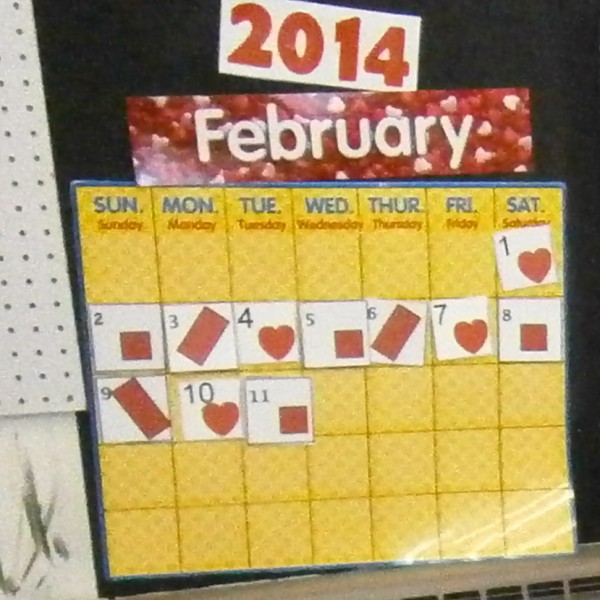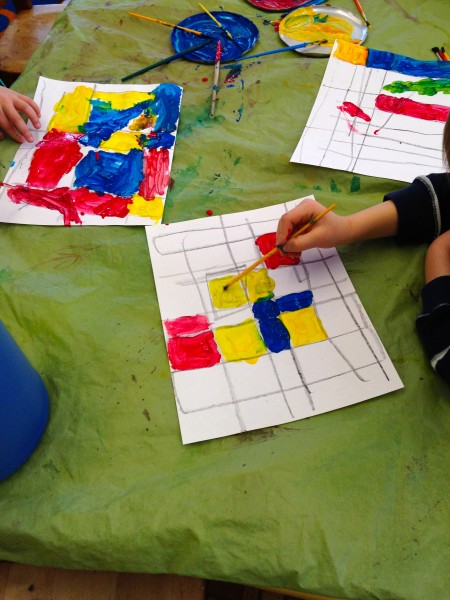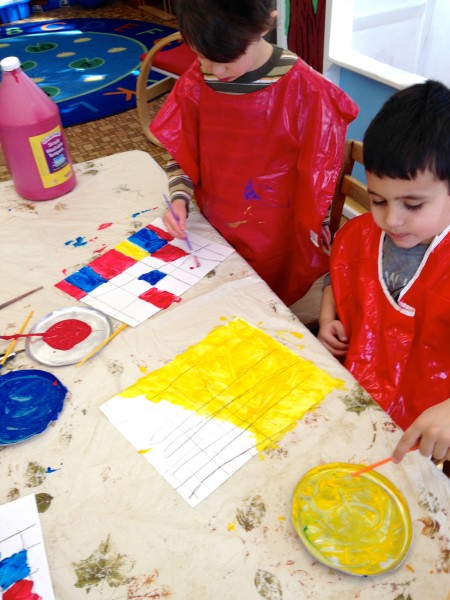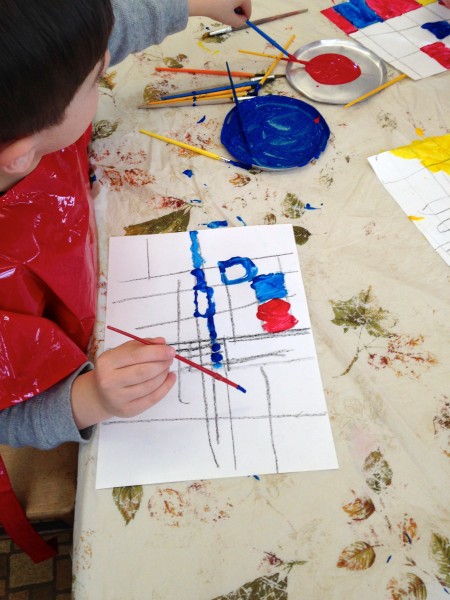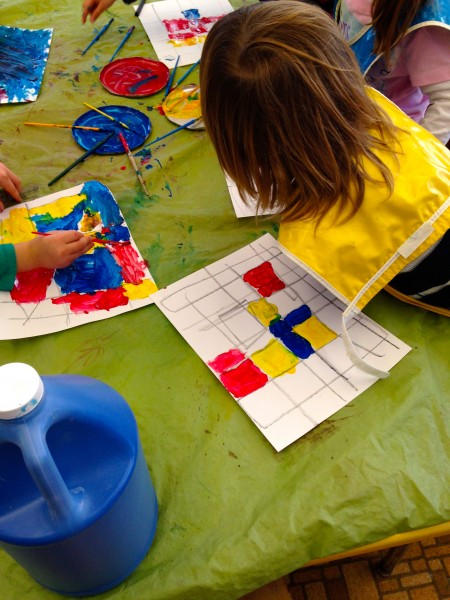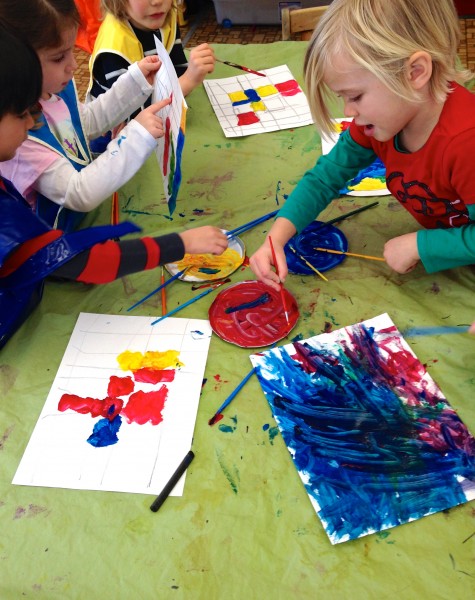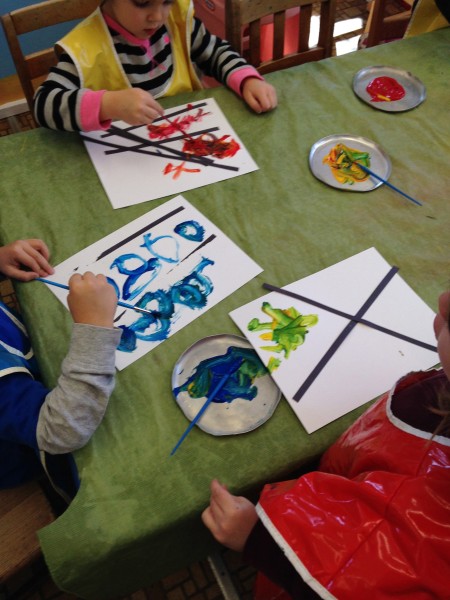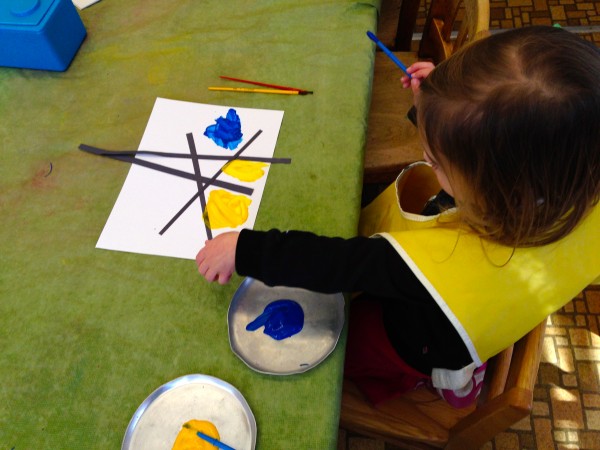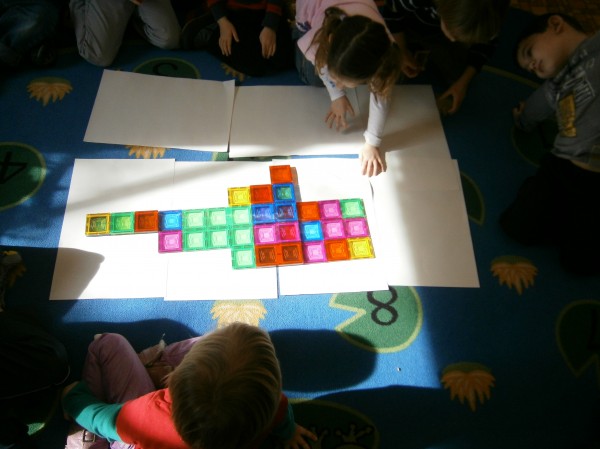How Curriculum is Developed and Lessons Evolve at RHCNS
In the Early Childhood world, there can be and often are heated debates about curriculum. Who determines what is taught? The teacher? The children? A purchased curriculum? Should holidays drive the curriculum? Are the activities developmentally appropriate? Just as in parenting, teaching styles and philosophies vary widely. I’ve realized that a lot is determined by the teacher’s education, interests, and the philosophy of the school. Don’t even TRY to get me in a preschool that has workbooks and worksheets! I would be unhappy, angry, and ineffective as a teacher.
What influences me:
1. The history of Rocky Hill Cooperative Nursery School.
RHCNS is a parent cooperative. Parents run the school and are involved in the day to day functioning. It’s always been a play-based program with an emphasis on family. It has always been staffed by fully certified teachers with at least a BA. We still sing some of the same songs my sons did when they attended.
2. My education.
As an Early Childhood major, I learned about child development. We were taught to avoid an emphasis on holidays, and to “think out of the box.” We learned HOW children learn, and how to create meaningful lessons to enhance their development. We learned the PROCESS of art was more important than the PRODUCT.
3. My experience:
I taught in the Special Education setting for the first 13 years of my career; educational goals and objectives were a daily concern for each child. I can’t imagine creating lessons now without thinking about what a child is learning. Are we working on prepositions? Following verbal directions? Visual discrimination? As I tell parents, there is always a “method to my madness!”
4. My interests:
I’ll admit that I am most enthusiastic when I love what we’re doing! I love being outside, I love nature. (Except worms. I don’t like worms. But we study them anyway. I always hope the children don’t notice that I don’t actually TOUCH them.) I love books. I love getting messy. I love thinking out of the box.
Always at the core of my planning are the NJ Preschool Teaching and Learning Standards. I refer to this often to make sure I’m “covering all the bases.”
www.state.nj.us/education/cccs/PreSchoolFinal.doc
I use a combination of the environment, family interests, children’s interests and needs, and my ideas. Sometimes I get excited about something I’ve learned at a conference.
For example:
The idea for looking at Piet Mondrian’s work started when I saw that some children were still having difficulty identifying a square and rectangle. My first step was to create new calendar numbers for February, using squares and rectangles in our pattern.
(You may have noticed there are only SOME numbers on the calendar. Each morning, a different child is in charge of the calendar. S/he leads the group in asking about the calendar and chooses from a variety of questions such as, “What month is it? What year is it? Sing the days of the week. Count.” We have a pattern each month, and to the right of the calendar are a variety of options with the day’s numeral, and children need to decide what comes next in the pattern. Sometimes the children surprise me by asking unique questions, such as “Name the letters in the month, Name the letters of the month backwards, What shape will we need tomorrow? What shape was yesterday?” )
Back to Mondrian:
I looked at the children’s books as well as artists. I showed the children examples of Piet Mondrian’s work, how he used lines to create squares and rectangles for his art. Some children used straight edges to draw the lines, others used strips of paper.
Children were encouraged to use their own ideas and create their own art using lines and paint. Some tried to replicate Mondrian, others painted in their own style.
No squares or rectangles? No problem, we discussed what shapes THEY made!
We created art as a group with squares and rectangles.
We also read Perfect Square by Michael Hall, and the children created their own art from a square.
Stayed tuned to see what we’re doing with Bald Eagles!
